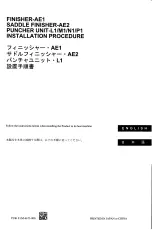
24
OK: Equally divided battery current.
All batteries contribute equally to the current into the load.
NOT OK: Current not equally divided.
Batteries closest to load will have the highest contribution to the current into the load.
Whereas batteries further away from load will have lesser current contribution.
Wear and tear will be higher on the battery close to the load.
4.8. Disconnecting the Li-ion battery
1. Turn off any device or charger the Li-ion battery is connected to.
2. Disconnect the negative wire from the - terminal of the Li-ion battery.
3. Disconnect the positive wire from the + terminal of the Li-ion battery.
5. Battery use
5.1. General information
!
Warning!
Follow the safety guidelines and measures of chapter 1.
!
Caution!
Charge the Li-ion battery before use.
5.2. Charging
!
Warning!
Never charge the Li-ion battery with a charging current larger than 1C.
!
Warning!
Stop charging in case the Li-ion battery switches into warning mode.
!
Caution!
Disconnect the charger from the Li-ion battery if it is not used for a long time.
!
Caution!
To charge the Li-ion battery, use a charger which is suitable for charging Lithium
Iron Phosphate batteries.
1. Connect the charger to the Li-ion battery as described in paragraph 4.6.
2. Charge the Li-ion battery in case of an under-voltage shutdown or if the state of charge
drops below 20% to preserve the lifespan of the Li-ion battery.
5.2.1. Charging rate
The Li-ion battery can be charged in approximately 1 hour. Displayed in Table 21 are the
charge times for the Li-ion battery at different charge currents. Always use the indicated
charge current and end of charge voltage during charging.
Charging rate
Time
Charge current
Maximum
1 hour
1C (90A)








































